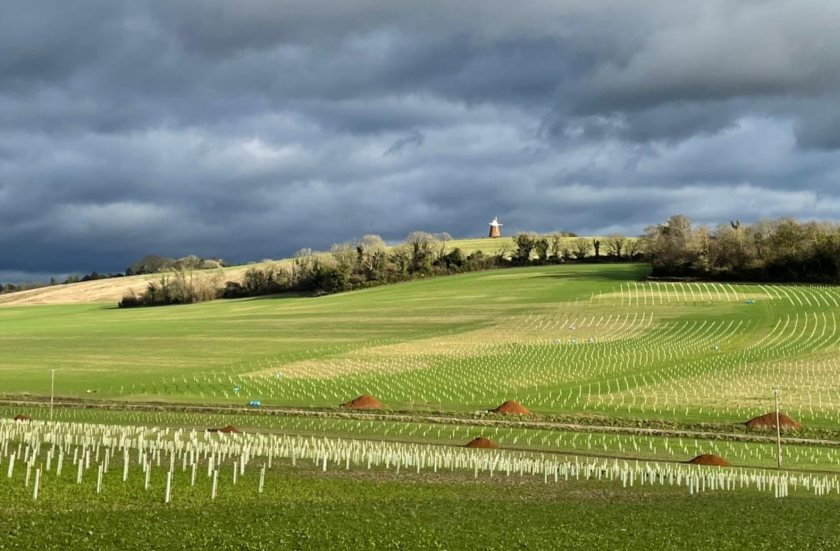
One of the UK’s largest ever rewilding projects is set to transform 330 acres of farmland in the South Downs National Park as part of the Biodiversity Net Gain (BNG) initiative.
The scheme at Halnaker Hill Farm, near Chichester, will see it transformed into diverse habitats, including hedgerows, grassland, woodland, ponds and wildflower meadows.
The plan also includes planting more than 20,000 trees, and Sussex cattle and sheep will be reintroduced as part of the site’s regenerative farming model.
Before its acquisition by Halnaker Hill Natural Capital (HHNC) in 2024, the land had been under wheat production since the 1970s.
The project is among the largest BNG land banks in the country by number of BNG units, offering a total of 856 units for the UK’s mandatory and voluntary biodiversity markets.
It is designed to support developers in meeting the requirements of the Environment Act 2021, which mandates a minimum 10% biodiversity net gain at development sites.
Any shortfalls must be addressed through the purchase of off-site BNG units such as those being offered at Halnaker Hill Farm.
In addition to developers, the scheme is also open to corporates and individuals seeking to meet environmental, social and governance (ESG) targets or make a personal contribution to nature recovery.
The site is owned by HHNC, with the commercial aspects managed by Kingsbridge, a developer of sustainable commercial projects.
Greg Lukasiewicz, marketing director at HHNC said: “Halnaker Hill Farm is one of the largest BNG Nature banks in the UK, generating over 850 available BNG units.
“Since HHNC acquired the site in 2024 we have been at work, and have already seen the landscape transform from intensively farmed land to a green haven for wildlife.
“We are excited to launch Halnaker Hill Farm to the market, setting a new benchmark for sustainable, regenerative farming while helping to meet the BNG needs of developers.”
The restoration draws heavily from a historic 18th-century map created by topographers Yeakell & Gardener for the “Great Survey of Sussex”.
This historic reference is helping guide the establishment of hedgerows, wild corridors and other elements of traditional mixed landscapes.
